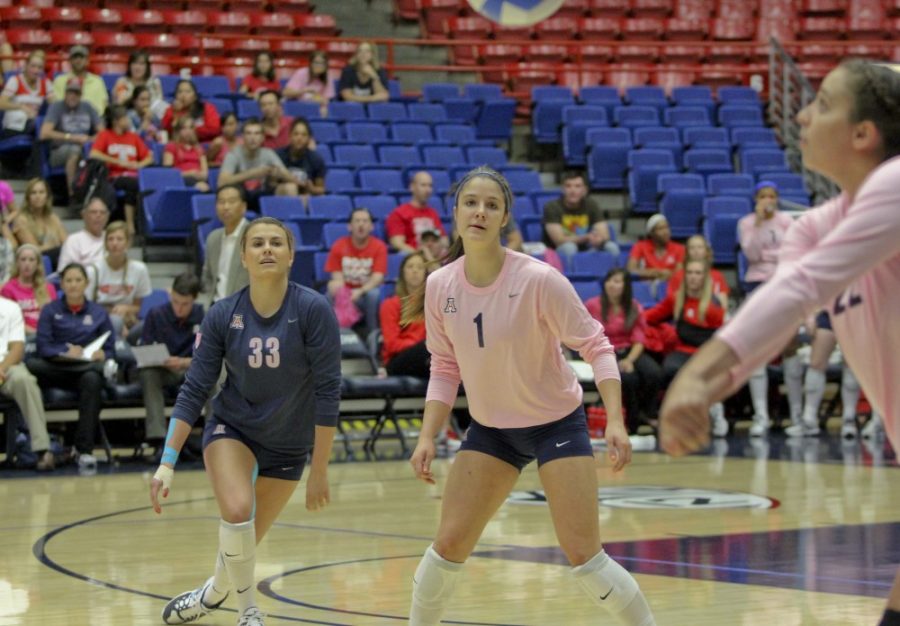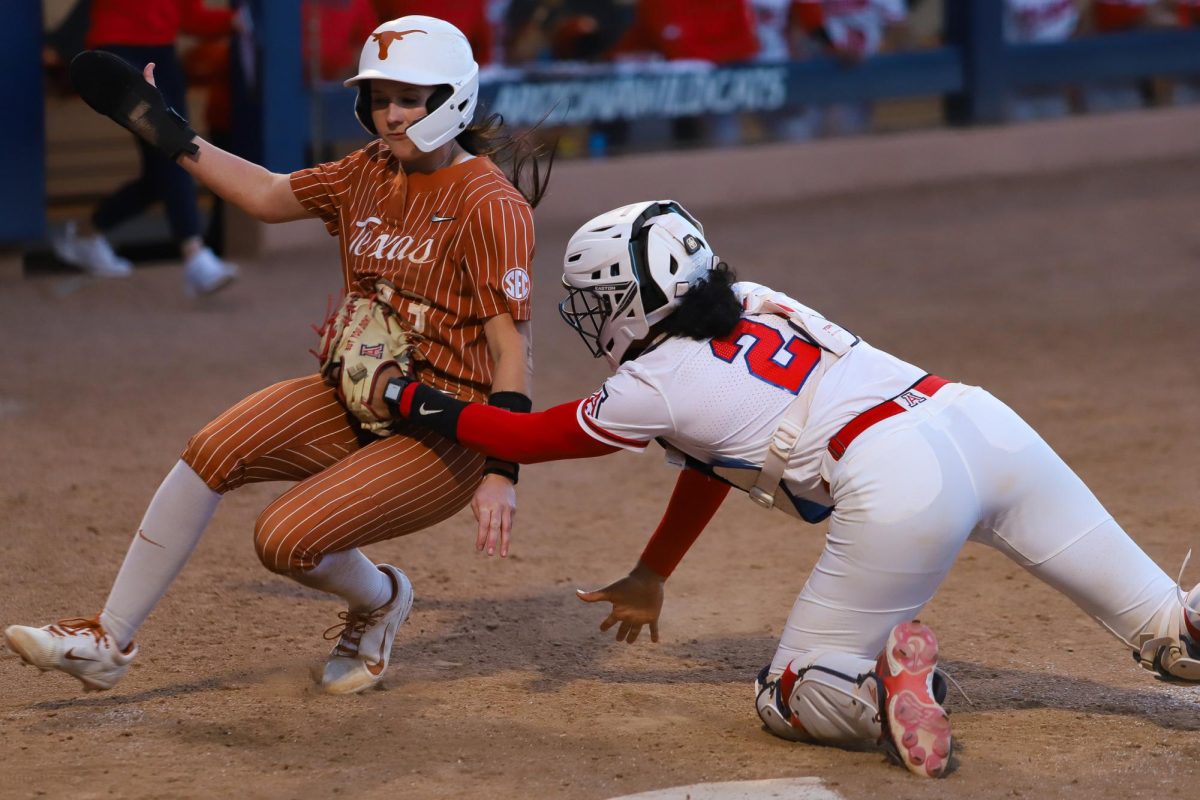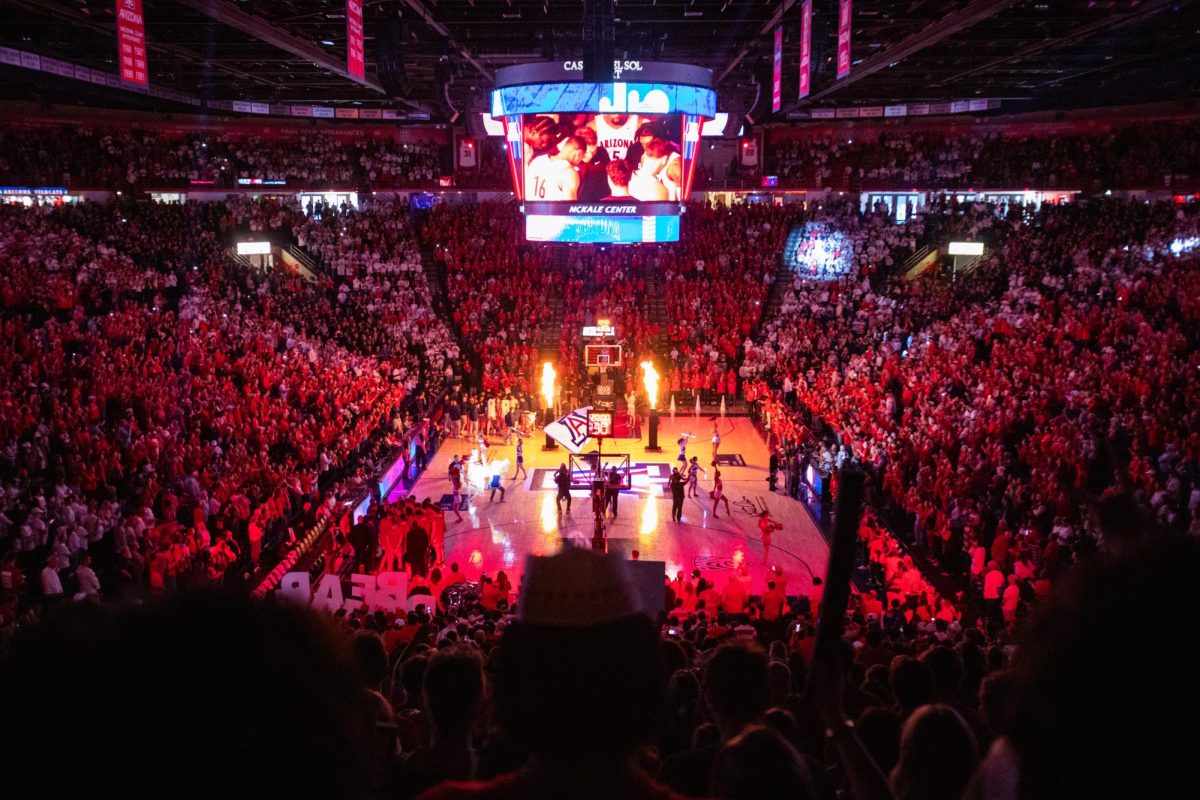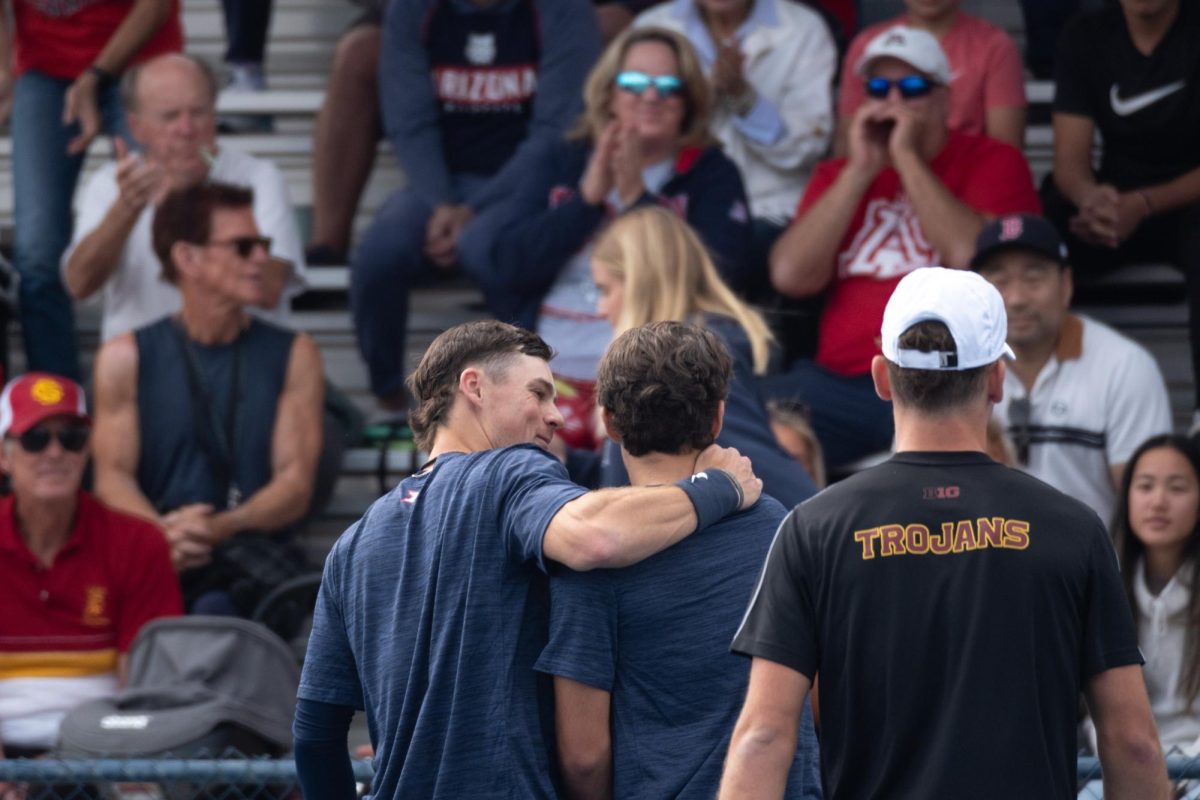This season’s Arizona volleyball team wasn’t supposed to be as good as last year’s. The players were too young and the conference too unforgiving to teams that lacked experience.
Yet the Wildcats have had a chance to play against some of the best teams in the nation simply by being a part of the Pac-12 Conference.
Junior libero Candace Nicholson is the most experienced Wildcat on the team and she is working through inflamed ribs, a wrist injury and chronic lower back problems in order to help the team compete.
Junior transfer Alyse Hensley was supposed to help the team on the right side of the net, but a recent injury has her sidelined.
Most of the players in the top half of the conference have the luxury of having played together before. A consistent chemistry is something Arizona has been lacking this season after losing four starting seniors to graduation.
Even last season, Arizona was out after the first round of the NCAA tournament in a disappointing loss to Michigan State. This year, the team’s been able to hold its own without a single senior on the roster, and the Wildcats have a 12-11 record thus far.
“You can bust my chops when we drop matches against some of the other teams like Utah or Colorado,” head coach Dave Rubio said.
“But it’s not fair to expect us to compete at a Stanford level when we’re still learning.”
Rubio said it was like comparing a professional team to a high school team.
The numbers may not be a clear reflection of just how much the team is improving.
Even if the Wildcats have an overall win-lose record above .500 this season, which is a requirement in order to be considered for the tournament, there’s no guarantee that the NCAA will invite Arizona for a tournament appearance. When looking at the NCAA women’s volleyball RPI rankings, the UA is No. 48 out of 330 Division I NCAA teams. The rankings are based on wins against losses and strength of schedule. Whether 48 is a good or bad ranking is up to interpretation. If you look at it as 48 out of 330, then Arizona volleyball is in good shape, especially considering it’s a rebuilding year.
When strength of schedule comes into play, however, Arizona’s schedule is one of the toughest in the country and a likely contributor to a higher RPI. By comparison, Arizona State University has an RPI of 44, a handful of Pac-12 teams are in the top ten and Colorado has the lowest ranking in the Pac-12 with an RPI of 72.
“The challenge we face is always being mentally ready to play,” freshman hitter Halli Amaro said. “Getting comfortable about what’s going on, on our side of the net.”









